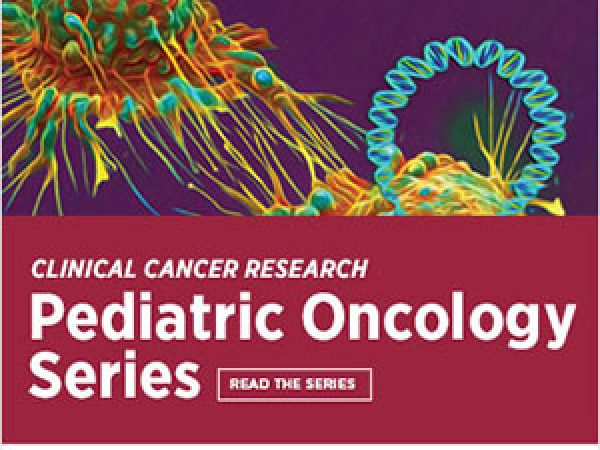What are the Deadly Hallmarks of Pancreatic Cancer?
The screen goes blue, that unmistakable tune starts playing, and the voice of Johnny Gilbert announces, “This. Is. Jeopardy!” We meet the contestants. We hear the categories. We know the rules.
For so many Americans, there is a comforting familiarity that surrounds watching the popular game show “Jeopardy” each night. And for over 36 years, an integral part of this evening ritual has been the show’s beloved and longtime host, Alex Trebek.
Sadly, Trebek died of pancreatic cancer Sunday morning, according to a statement from “Jeopardy.”
Pancreatic cancer is an aggressive and often lethal disease characterized by unregulated growth of cells in the pancreas, which is responsible for producing hormones and digestive juices. Over 57,000 people are diagnosed with pancreatic cancer each year in the United States, accounting for an estimated 3.2 percent of all new cancer cases and 7.8 percent of cancer deaths.
In the early stages of the disease, when the cancer is confined to the pancreas, there are few, if any, symptoms, making it particularly difficult to detect. As a result, the vast majority of cases are diagnosed only after the cancer has spread to other parts of the body, as was the case for Trebek, who revealed that he had been diagnosed with stage 4 pancreatic cancer in a video message on March 6, 2019.

Images courtesy of Sony Pictures.
“Normally, the prognosis for this is not very encouraging,” Trebek explained as he shared his diagnosis, referring to the 2.9 percent relative five-year survival rate of stage 4 pancreatic cancer.
In the ensuing months, Trebek provided fans with periodic updates and spoke candidly about his experience with the physical and emotional tolls of undergoing cancer therapy. Patients with stage 4 pancreatic cancer are typically treated with chemotherapy, and some patients whose cancers have certain mutations may also be eligible for targeted therapy or immunotherapy.
Early on, Trebek responded well to his chemotherapy treatment, but in September 2019 he revealed that his cancer had progressed, even after trying immunotherapy. He went on to receive more chemotherapy and eventually an experimental immunotherapy cocktail consisting of nine different drugs. In an interview this past summer, Trebek reported that his levels of the tumor marker CA-19 had decreased since starting the experimental immunotherapy, indicating that the tumor was shrinking. A phase II clinical trial to evaluate this treatment in other patients is currently open for enrollment.
Experimental therapies, such as the one Trebek received, are the culmination of years of cancer research that have uncovered how pancreatic cancer develops and what makes it so devastating. At last month’s AACR Virtual Special Conference: Pancreatic Cancer, AACR President-Elect and prominent pancreatic cancer researcher David Tuveson, MD, PhD, summarized some of the key characteristics of pancreatic cancer that contribute to its development and its aggressive nature, dubbing these “the deadly hallmarks of pancreatic cancer.”
Tuveson explained that chronic inflammation of the pancreas gives rise to pancreatic tumors and the cancer’s characteristic stroma, which is the network of cells and supportive tissue surrounding the tumor. The unique stroma of pancreatic cancer contains few blood vessels, and those that are present tend to be constricted. This limits the amount of oxygen and nutrients that can reach the tumor, forcing the tumor to adopt unusual and aggressive methods of producing energy to fuel growth. The lack of blood vessels in the stroma also restricts drug delivery, thereby impeding efforts to treat the cancer.
Another hallmark of pancreatic cancer is its tendency to spread to other organs often and quickly. This is due, in part, to mutations in the KRAS gene, which themselves constitute an additional deadly hallmark, explained Tuveson. Mutated KRAS is a key driver of pancreatic cancer, making this protein a prime therapeutic target. However, inhibiting KRAS has proven to be extremely difficult, although some progress has been made in recent years.
The physical toll of pancreatic cancer on patients is another feature that makes it so difficult to treat, according to Tuveson. The disease rapidly causes patients to become frail, sick, and in pain, preventing them from joining clinical trials and preventing immunotherapies from being effective. Additionally, the scarcity of reliable biomarkers renders the disease difficult to detect and monitor.
Given all these deadly features, what are some potential strategies for improving outcomes for patients with pancreatic cancer? One strategy under investigation is to prevent or reverse inflammation of the pancreas through lifestyle changes or inhibition of key signaling pathways. Furthermore, targeting components of the stroma or key metabolic pathways could help make the cancer susceptible to existing therapies. Developing effective KRAS inhibitors, identifying biomarkers, and lessening the physical toll of the disease are additional strategies that could improve clinical outcomes, Tuveson noted.
With the death of Alex Trebek, we have lost yet another cultural icon to pancreatic cancer. There is still so much to learn about this devastating cancer and much work to do to before we no longer consider it a lethal disease.
How will we get there?
While it may not be phrased in the form of a question, it is clear that the answer is cancer research.



